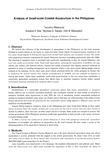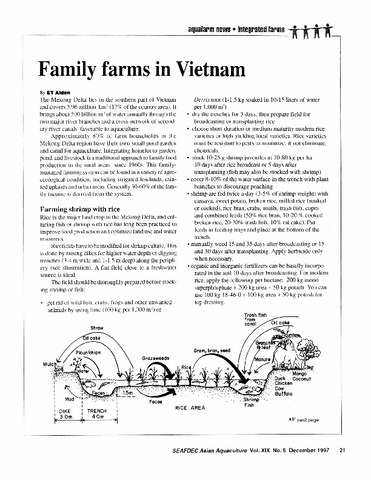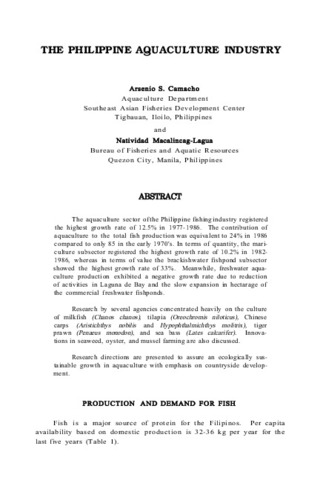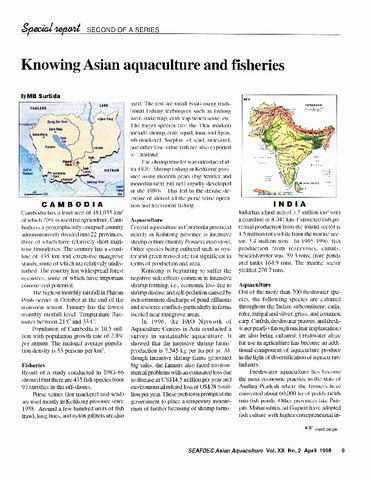Analysis of small-scale coastal aquaculture in the Philippines
Share
Abstract
We studied the influence of the development of aquaculture in the Philippines on the local economy, focusing on coastal fishers in two towns in Capiz and Iloilo, Panay Island, Philippines. Coastal residents in the two towns closely depend on fishing and aquaculture for both their primary and secondary incomes. The small-scale aquaculture business commenced by coastal fishermen has been expanding particularly after the 1990s. The planting of mangrove trees is promoted and small-scale aquafarming is done by coastal fishermen who exert only small environmental loads. Small-scale aquaculture, including the aquaculture of shellfish, net cage culture, pen culture, and seaweed culture, requires low initial investment and imposes minimal workload on operators in terms of breeding management up to shipment, which is why most coastal fishing people want to continue in the business. On the other hand, pond culture, practiced before the 1990s, promises no further rise in production for several reasons that include overproduction of milkfish and the outbreak of diseases in shrimp and prawn. Under these conditions, small-scale aquaculturists in two towns have established a sustainable aquaculture production system that allows them to maintain mangrove forests, utilize natural recirculation functions and help local residents obtain income.
Suggested Citation
Matsuura, T., Siar, S. V., Salayo, N. D., & Baticados, D. B. (2007). Analysis of small-scale coastal aquaculture in the Philippines. In T. Matsuura (Ed.), Comparative Analysis of Aquaculture Management in Brackish Mangrove Areas in Three Southeast Asian Countries (JIRCAS Working Report No. 54) (pp. 65-72). Tsukuba, Ibaraki, Japan: Japan International Research Center for Agricultural Sciences
Subject
Collections
Related items
Showing items related by title, author, creator and subject.
-
Family farms in Vietnam
Aldon, Eva T. (Aquaculture Department, Southeast Asian Fisheries Development Center, 1997) -
The Philippine aquaculture industry
Camacho, Arsenio S.; Macalincag-Lagua, Natividad (Aquaculture Department, Southeast Asian Fisheries Development Center, 1988)The aquaculture sector of the Philippine fishing industry registered the highest growth rate of 12.5% in 1977-1986. The contribution of aquaculture to the total fish production was equivalent to 24% in 1986 compared to ... -
Knowing Asian aquaculture and fisheries
Surtida, Marilyn B. (Aquaculture Department, Southeast Asian Fisheries Development Center, 1998-04)This article is the second of four parts.





